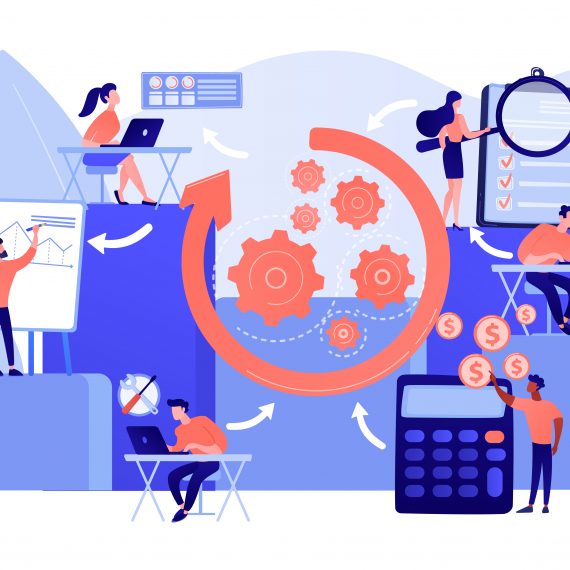Why is our workforce ageing?
There is a number of reasons why our workforce is ageing. Most of them are demographical and include baby boomers reaching retirement age and young people entering the workforce later. An improved healthcare system allows people to stay healthy and active for longer, while the increased life expectancy creates a perception that people must work for longer, so that they don’t outlive their retirement savings. This naturally increases concerns around financial wellbeing during retirement. According to Lonergan research, the majority of older employees (72%) stay in the workforce due to financial necessity.
Why do we need to integrate the ageing workforce?
Firstly, it is simply the right thing to do. It provides opportunities for people to stay active, helpful and included in our workforce and society. Keeping people employed in the jobs they can physically do improves older individuals’ wellbeing and ultimately reduces the impact on the health system. Positive psychology research shows that older people are happy in cultures where retirement is not a social expectation. In such cultures, “work” is generally quite integrated with “life” and is often not perceived as work, but rather as a part of life.
Secondly, it is simply a good talent and skill retention practice. We live in the age of rapid technological advancements and we seem to always believe that “the next great thing” is yet to come. Hordes of ambitions young specialists move into the direction of new shiny technologies – often completely oblivious to their limitations. And as humanity rolls out the next big technological advancement – be that AI, block chain or 5G – we never seem to stop and question what exactly it is going to replace. In most cases, it will replace human skills or an existing technology.
While in most cases the new technology may be superior, preserving what we once had isn’t always a bad idea. Not everything once lost can be replicated and some examples include the Stradivari violins and Roman cement that are far superior to any of today’s analogues. I really enjoyed looking into this list of “10 top lost technologies” when I was researching for this blog.
Here are 5 helpful tips on how you can integrate your ageing workforce
Offer flexible working arrangements
I feel like it is becoming an answer to just about every HR issue today. It is no different to an ageing employee as it is for a millennial, parents with kids, those building multiple careers, people with mental or physical health issues and many other groups of employees in today’s workforce. Flexibility is key and it includes flexible working locations and hours and the ability to wrap work around personal commitments.
Support health and wellbeing
If your company is large enough and has a mixed-aged workforce, you may offer a substantial health benefit compared to what your aged employees would pay privately. However, if you do offer health insurance, make sure you budget for a steady increase in cost into the future as your workforce continues to age. Also consider other ways to support health and wellbeing, bearing in mind that reducing stress for your employees – young or old – is key.
Build inclusive culture
A common phrase in today’s business talk, but a culture of diversity and inclusiveness will help you integrate the ageing workforce. An organisational culture that can embrace the youthful enthusiasm, as much as the critical eye of experience – is a recipe to build the best and most sustainable products and services for customers. With their wealth of historical institutional knowledge, older employees can also help businesses through different market cycles balancing the need for change with the need for continuity.
Help people re-evaluate their careers
Our traditional career views are rather limited: we tend to believe that people start “at the bottom”, then “work their way to the top” and usually reach the peak of their career just before they are about to retire. In the last few decades we have become more and more accustomed to the notion of “lateral moves”, “career breaks” and generally “non-linear” careers. This trend is only going to continue and companies that can help their employees break through these pre-conceptions are going to end up having the most diverse, and ultimately, the most versatile workforce. It is likely that for many people careers are going to “peak” in the middle of their work-life; while some may be “double-peaked” or have a reverse peaking – it all depends on individual circumstances. Good career counselling and coaching practices in your workplace could ensure people are helped through such career transitions and any social obstacles (like historical conditioning) are mitigated.
Right pay for the right roles
As we talk about career transitions, it is crucial to mention that while retaining the ageing workforce, the same principles of “the right pay for the right role” should apply. It makes little sense to pay an ex-engineering manager who has transitioned into a technical specialist role their engineering manager’s salary. While we may want to pay a market premium for their knowledge of rare technology and be happy to pay them at the top of the range for their eagerness to train and coach others – general remuneration principles and benchmarking should still apply. This needs to become part of the social contract between employee and employer – where moves “down” become as accepted and even celebrated as the moves “up” or “sideways”.





Leave a Comment